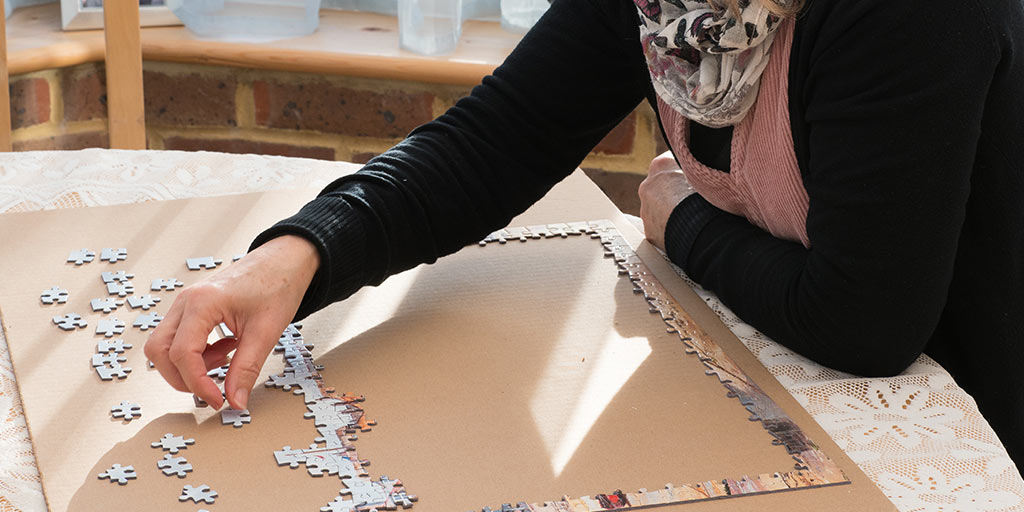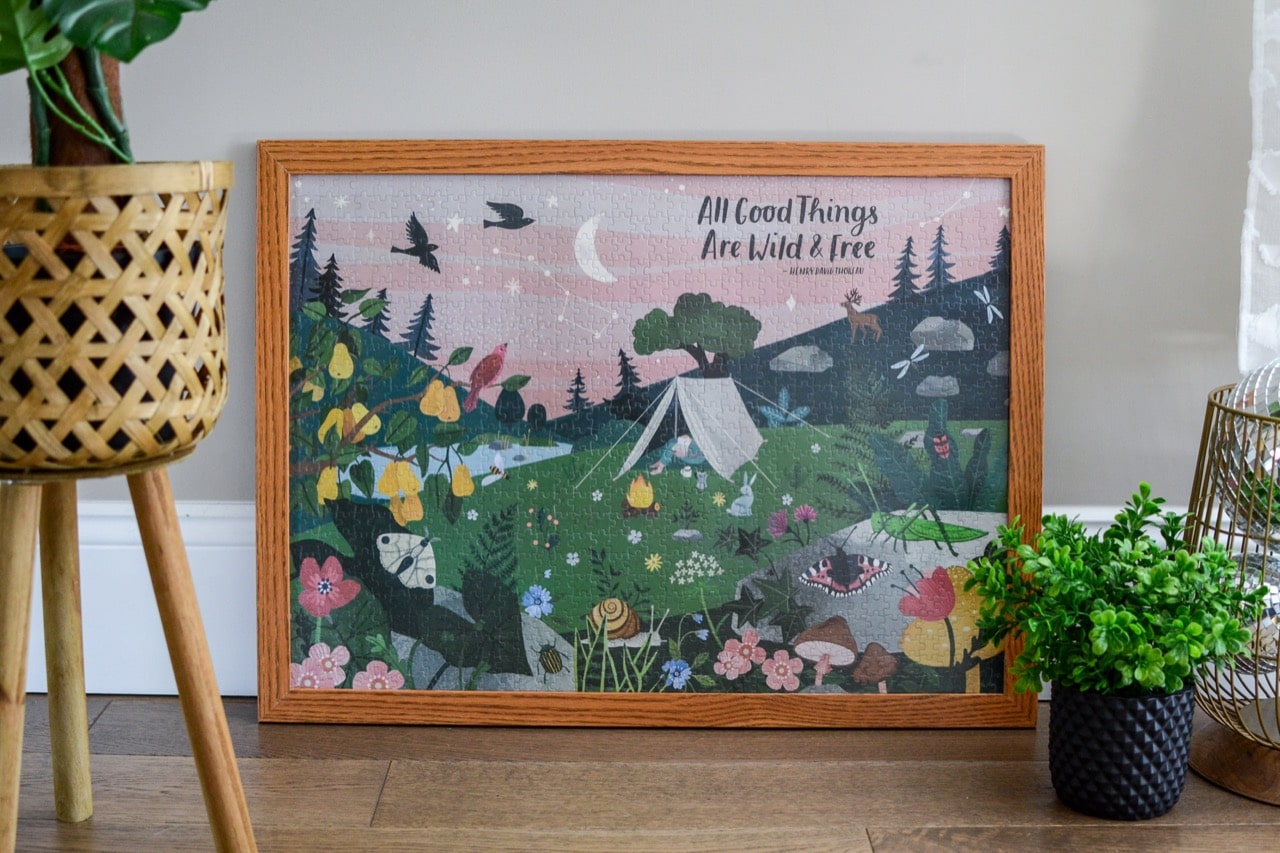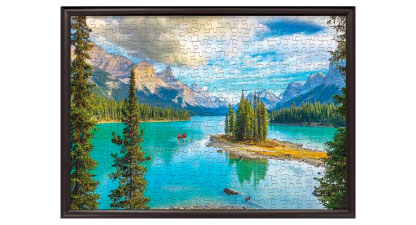How To Frame A Puzzle In 6 Easy Steps
Learn how to frame a puzzle in simple steps, preserve your masterpiece, and enhance your home décor. Follow this detailed guide for flawless results.
Author:Mia ThompsonReviewer:Calvin PenwellJan 09, 202519.1K Shares347.8K Views

You've conquered that challenging puzzle, and now you're wondering what to do next. Framing it is a fantastic way to preserve your accomplishment and create a beautiful piece of art for your home.
If you completed it with family, as a souvenir from a trip, or as a gift, a framed puzzle is a unique and meaningful decoration. This guide will take you through the entire process of framing your puzzle, from choosing the right supplies to hanging it proudly on your wall.
Why Frame A Puzzle?
Framing a completed puzzle is more than just keeping it together; it's about transforming it into a magnificent work of art that you'll enjoy for years. Puzzles frequently evoke cherished memories, such as a family vacation or a milestone birthday. Framing them preserves the memories and transforms them into something you can keep forever.
In the same way that meaningful valentines quotesexpress love and emotions, a framed puzzle captures special moments and turns them into lasting keepsakes. A framed puzzle can also provide a unique element to your home design. You can select a classic frame to complement your living area or a more modern shadow box to give depth. It's an excellent method for creating personalized wall art that highlights the complex features and brilliant colors of your finished puzzle.
Essential Materials For Framing
- Puzzle Glue or Adhesive: The most commonly used puzzle glue is a clear adhesive that dries to hold the puzzle together without damaging the pieces. Alternatively, spray adhesives or Mod Podge can work well.
- Frame: You can choose from various frame types, such as shadow boxes for deep-set puzzles or traditional frames for flatter puzzles. Make sure the frame is slightly larger than the puzzle to allow space for the edges.
- Mounting Board: A sturdy backing material like foam board or mat board will keep the puzzle stable and prevent warping.
- Hanging Hardware: Picture wire, D-rings, or sawtooth hangers are commonly used for securely hanging the framed puzzle.
- Protective Glass (Optional): If you're framing a high-value or large puzzle, you may want to protect it with glass to prevent dust, dirt, or fading from light exposure.
- Matting (Optional): Adding a mat around your puzzle can enhance its appearance, especially if the frame is larger than the puzzle itself.
Step-by-Step Guide To Framing A Puzzle
Now that you have everything ready, follow these detailed steps to successfully frame your puzzle.
Step 1: Prepare The Puzzle
Before you frame your puzzle, you need to ensure it’s in good condition. Start by gently flipping the puzzle over onto a flat surface like a table or the floor. Use a soft cloth or your hands to carefully lift any stray pieces and align the edges.
Just as taking a past life quizcan offer unique insights into one’s history, carefully preparing your puzzle ensures that it reflects its full beauty and story. Once the puzzle is stable, check for any gaps or pieces that might be loose. If you notice any irregularities, gently press them back into place. Now's a good time to clean the surface of the puzzle to remove any dust or fingerprints, which will help when applying glue.
Step 2: Applying Glue Or Adhesive
Using puzzle glue is the most common method for keeping the puzzle together during framing. Apply a thin layer of glue across the back of the puzzle, working in small sections. Start from one corner and use a brush or sponge to spread the glue evenly. Be sure to cover the entire surface, especially the edges, where pieces tend to come apart.
If you prefer a faster solution, spray adhesive can be used as an alternative, though you should ensure it’s applied evenly and doesn’t seep through the gaps between pieces. Let the glue dry completely, which can take anywhere from a few hours to overnight, depending on the type of adhesive you use.
Step 3: Mounting The Puzzle On A Board
Once the glue has dried, you need to mount the puzzle onto a backing board. This board will provide stability and prevent the puzzle from warping over time. Cut a piece of foam board or mat board to the same size as the frame.
Lay the puzzle face-down onto the board, ensuring that it fits snugly. You can use a small amount of glue to attach the puzzle to the board for extra security. Be careful not to press too hard, as you could shift the puzzle pieces.
Step 4: Choose The Right Frame
Selecting the appropriate frame is crucial for your puzzle's security and visual appeal. For a neat appearance, measure the puzzle's dimensions (including the backing board) and choose a frame that is marginally bigger than the piece.
A shadow box frame, which has depth to fit the thickness of the puzzle, is a good option for large or thick puzzles. A conventional flat frame ought to be adequate for more common challenges. The material of the frame; wood, metal, or plastic should blend in with the design of the space in which it will be hung.
Step 5: Putting The Puzzle In The Frame
Once you've chosen your frame, place the puzzle (with the backing board) into the frame carefully. Secure it using the frame’s built-in clips, fasteners, or a set of small nails, making sure the puzzle is properly centered.
If you’re using protective glass, place it on top of the puzzle before sealing the frame. This will help keep dust and dirt away while also preserving the colors and quality of the puzzle over time.
Step 6: Hanging The Framed Puzzle
To finish the process, install the hanging hardware on the back of the frame. Picture wire is a common choice, as it provides flexibility and allows the puzzle to hang securely. You can also use D-rings or sawtooth hangersdepending on the weight and style of the frame.
Make sure the hanging hardware is centered and securely attached to prevent the frame from tilting or falling. Once done, hang your puzzle on the wall and step back to admire your work!
Additional Tips For Framing Puzzles
- For Large Puzzles: If your puzzle is too large for a standard frame, consider having a custom frame made or opting for a panoramic-style frame.
- Protecting from Fading: If you're displaying your puzzle in a sunlit area, make sure to use UV-protective glass to reduce the risk of fading over time.
- Choosing a Mat: Adding a mat around the puzzle gives it a more polished, professional look. It’s also useful if your frame is much larger than the puzzle itself, as it can help balance the visual proportions.
Common Mistakes To Avoid
- Using the Wrong Glue: Some glues can damage puzzle pieces, leaving stains or causing pieces to bend. Always use puzzle-specific adhesive.
- Choosing the Wrong Frame Size: Ensure that your frame is slightly larger than the puzzle to avoid crowding or gaps. A tight fit could damage the puzzle over time.
- Not Securing the Puzzle Properly: If the puzzle isn't securely attached to the board, it could shift or warp, especially as it’s hung. Always ensure the puzzle is firmly fixed. Engaging in activities like these can also encourage children to solve complex puzzlesas they grow, enhancing their critical thinking and problem-solving skills.
FAQs
How Long Does It Take To Frame A Puzzle?
The entire process typically takes a day, including drying time for glue. However, it’s best to allow the puzzle to dry overnight to ensure it’s fully set before framing.
What’s The Best Frame Size For A Standard Puzzle?
A standard puzzle frame should be about 1–2 inches larger than the puzzle on all sides. For example, if your puzzle measures 20"x30", choose a frame that’s at least 22"x32".
Can I Frame A Puzzle Without Glue?
It’s not recommended, as glue ensures the puzzle holds together during framing. However, you can use other adhesives, like spray adhesive or even clear packing tape, if you prefer.
How Can I Prevent My Puzzle From Falling Apart While Framing?
Use a strong puzzle glue and allow it to dry completely before handling. Consider placing the puzzle on a stable surface during mounting to avoid shifting pieces.
Conclusion
Framing your completed puzzle is a fantastic way to preserve your hard work and turn it into a beautiful piece of art for your home. It's like giving your masterpiece the spotlight it deserves.
Not only does framing protect the puzzle from damage, but it also adds a touch of elegance and makes it a stunning piece of décor. By following these few simple steps above, you can confidently frame your puzzle and proudly display it for years to come.

Mia Thompson
Author
Mia Thompson is a versatile writer at Kansas Press, delving into a range of topics including news, spiritual exploration, astrology, and numerology. With a passion for delivering insightful and informative content, Mia's articles provide readers with valuable perspectives and thought-provoking insights into these intriguing subjects.
She is dedicated to creating content that resonates with readers and fosters a deeper understanding of complex topics.

Calvin Penwell
Reviewer
Since diving into numerology in 1997, my path has been marked by extraordinary encounters and insights. A pivotal moment was uncovering a forgotten numerological manuscript in a tucked-away Italian library, which deepened my connection to the ancient wisdom of numbers. Another transformative experience was a meditation retreat in Nepal's tranquil mountains, where I honed my intuition and the art of interpreting numerical vibrations.
These adventures have not only enriched my numerological practice but also my ability to guide others towards understanding their destiny and life's purpose. My approach is deeply personal, rooted in a blend of historical knowledge and intuitive insight, aimed at helping individuals find their alignment with the universe's abundant energies. My mission is simple: to share the power of numerology in illuminating paths to abundance and fulfillment.
Latest Articles
Popular Articles

